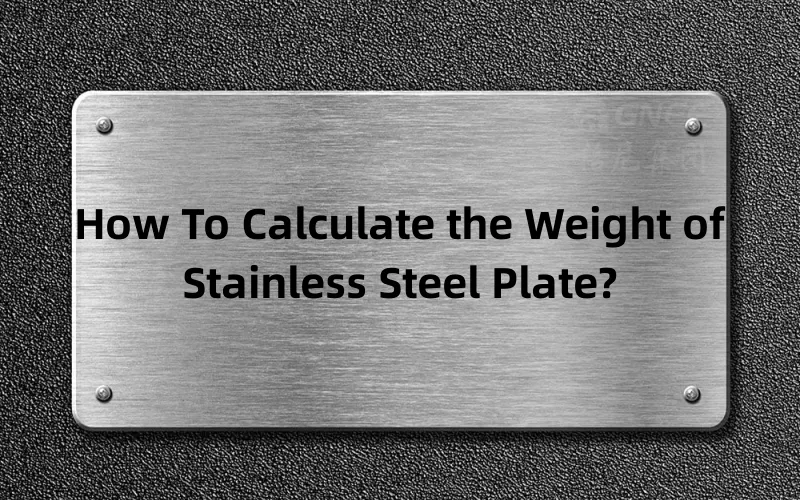Importance of Knowing the Weight of Stainless Steel Plate
The weight of a stainless steel plate can be important for several reasons, including the following:
1. Weight Influences Cost
Like other raw materials such as gravel, sand, and concrete, stainless steel (including sheets, plates, coils, pipes, and bars) is also commonly priced per unit weight. To make the transaction more standardized and convenient, the steel industry prices stainless steel per unit weight and creates consistent pricing within the market. This way of pricing eliminates guesswork and provides significant time and cost savings.
2. Weight Affects Movability
Stainless steel plate products often need to be lifted to load/unload, and the machine doing the lifting may have a weight limit. Account for this weight capacity and choose your stainless plates accordingly. Doing so will help you avoid dangerous situations like machine tip-overs and worker injuries.
3. Weight Influences Shipping Costs
Heavier materials also mean higher costs when transporting them. The greater the product weight, the higher the shipping costs. Therefore, determining the total weight of the products you purchase can help you properly plan their transport from the supplier’s warehouse to your project or construction site.
4. Weight Affects Application
It is clear that the stainless steel plate is a very common material used in many industries, such as construction, manufacturing, aerospace, home appliances, and so on. They can be used to make steel structures, panels, car bodies, oil tanks, containers, and more. Whether you’re in construction, manufacturing, or another industry, when you buy or use stainless steel plates, you need to know their weight before buying.
5. Weight Influences Performance
Finally, the weight of stainless steel plates is directly related to their performance. If the weight of the stainless steel plate exceeds expectations, it may cause inconvenience to its processing or even a safety hazard. Therefore, it is very necessary to calculate the weight of stainless steel plates.
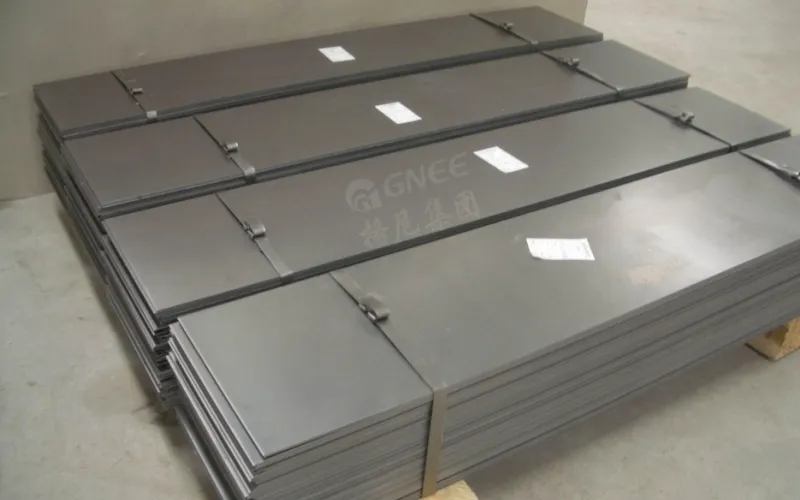
How To Calculate the Weight of Stainless Steel Plate?
In this part, we will first introduce the basic concept of steel plate weight, that is, what affects the weight of stainless steel plate. Then, we will explain in detail how to use the formula to calculate the stainless steel plate weight and give examples.
Factors That Affect the Weight of Stainless Steel Plate
To calculate the weight of a stainless steel plate, we have to know some necessary factors that affect the weight calculation. Before proceeding with the actual equation for calculating stainless steel plate weight, let’s understand those first.
1. SS Plate Density
One of the key variables in the calculation of the weight of a stainless steel plate is density.
Stainless steel plate density refers to the mass of stainless steel plate per unit volume. In terms of stainless steel plate, the density can vary depending on different stainless steel grades, generally fluctuating between 7.7 and 8. Therefore, to calculate the stainless steel plate weight of a specific grade, we have to find the density of that specific steel plate material.
Under normal conditions, the densities of a specific grade of stainless steel material are usually available in the ASTM standards and specific design codes. Alternatively, you can approach the manufacturer to get the densities of their produced stainless steel material.
Also, note that the weight of any product varies proportionately with respect to its density. It means stainless steel plates with higher density will have more weight as compared to those with lower density, and the more you will cost accordingly.
2. SS Plate Dimensions (Length, Width, and Thickness)
Secondly, you need to know the dimensions of the stainless steel plate, including the length (L), width (W), and thickness (T). They are required to calculate the volume of the stainless steel plate. All dimensions must be in a consistent unit to calculate the volume. Doing an imperial calculation, this would be cubic feet; with a metric calculation, it’d be cubic meters.
3. Unit Conversion
When using the formula to calculate the weight of a stainless steel plate, the length, width, and thickness need to be converted to the same unit for calculation. Common units include millimeters, centimeters, meters, inches, and feet, among others.
The above are the basic concepts needed to calculate the weight of a steel plate. Next, we will introduce how to calculate the weight of the steel plate.
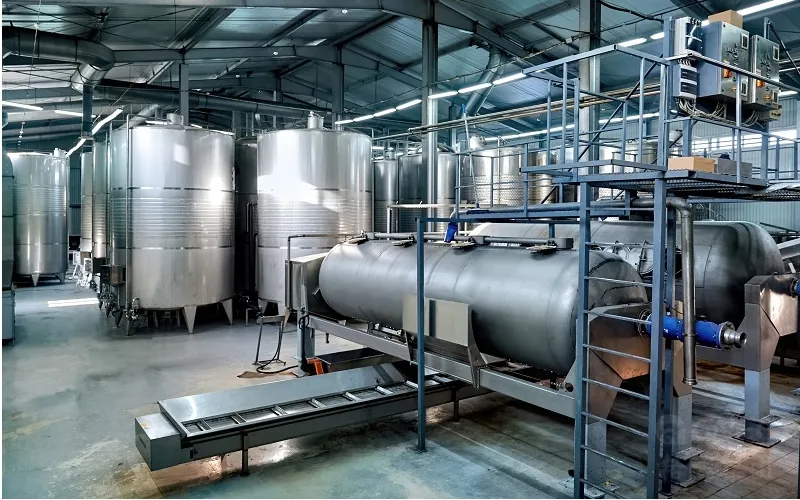
Calculating the Weight of Stainless Steel Plate
After the unit is unified, the stainless steel plate calculating formula is:
Weight (kg) = Width (m) * Length (m) * Thickness (m) * Density (kg/m³)
Once you have the measurements for the length, width, and thickness of your stainless steel plate, you need to know what grade of stainless steel plate you are working with. As we said before, different grades of stainless steel plates have different densities.
Generally, the stainless steel plates are categorized into two categories in terms of their densities: 300 series and 400 series. Let’s see one by one.
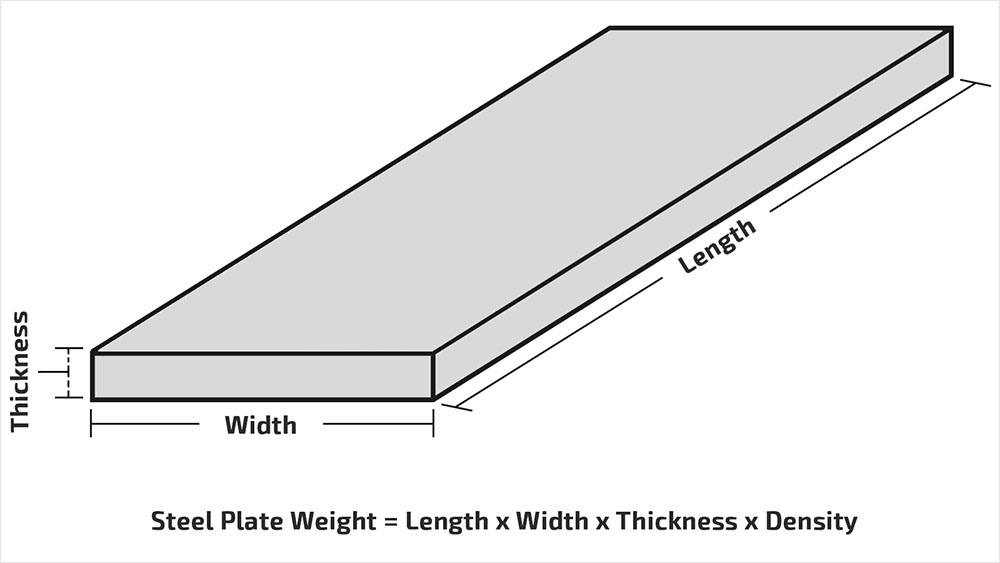
Calculating the Weight 300 Series Stainless Steel Plate
The densities of the 300 series of stainless steel plates are:
| Grades | Density |
| 301, 302, 304, 304L, 305, 321 | 7.93 |
| 309S, 310, 316, 347 | 7.98 |
Here is an example of calculating the weight of a 304 stainless steel plate:
Width=1.5m, length=6m, thickness= 3mm, density=7.93 g/cm3
First, the unit needs to be unified, namely:
3m = 0.003m, 7.93g/cm³=7930kg/M³
Then, substitute the above data into the formula for calculating the weight of the steel plate:
0.003 (m) *1.5 (m) *6 (m) *7930 (kg/m³) = 214.11 (kg)
This is the weight of a single 304 stainless steel plate. If there are multiple 304 stainless steel plates of the same specification, the total weight can be obtained by multiplying the number of it.
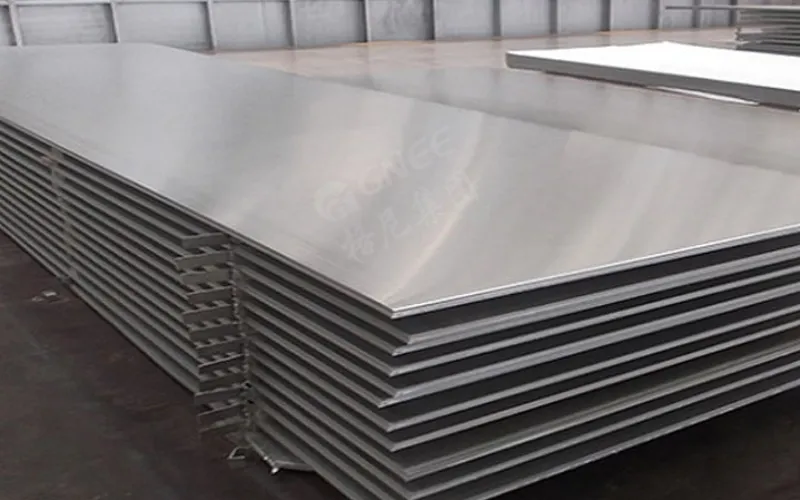
Calculating the Weight of 400 Series Stainless Steel Plate
The density for stainless steel plate in the 400 series is 7.75 grams per centimeter cubed (metric).
Here is an example of calculating the weight of a 410 stainless steel plate:
Length=2m, width =1m, thickness =10mm, density=7.75 g/cm3
First, the unit needs to be unified, namely:
10 mm = 0.01 m, 7.75 g/cm3 = 7750 kg/m3
Then, substitute the above data into the formula for calculating the weight of the steel plate:
0.01 (m) *2 (m) *1 (m) *7750 (kg/m3) = 155 (kg)
*It’s important to note that doing the calculations yourselves with these numbers, should be considered estimations. They are calculated with nominal dimensions and standardized densities. In practice, the actual stainless plate weight may vary significantly from the estimated weight due to the variations of tolerance and composition observed in the manufacturing.
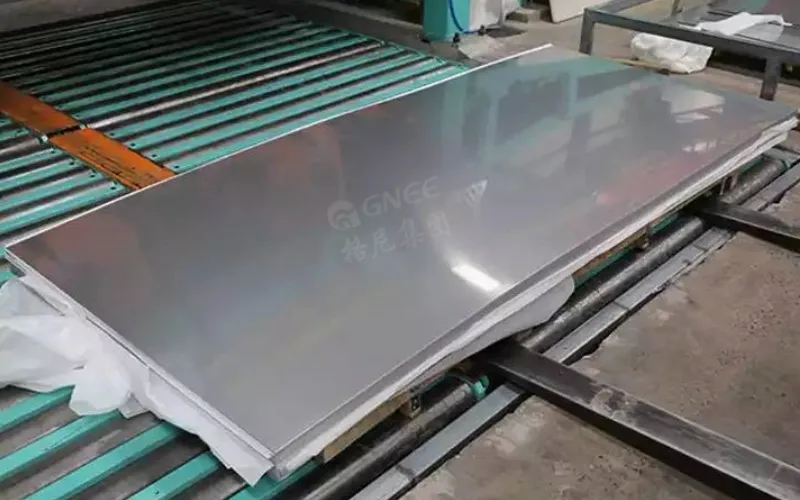
Other Ways to Calculate the Weight of Stainless Steel Plate
There are also other ways to calculate the weight of the SS plate if you’re worried about your own calculations being inaccurate. They are an online stainless steel plate weight calculator and a stainless steel plate weight table.
1. Online Stainless Steel Plate Weight Calculator
The online stainless steel plate weight calculator is a convenient and quick method. Nowadays, there are many websites that provide online stainless steel plate weight calculators that can quickly and accurately calculate its total weight. When using these calculators, you only need to input the parameters such as the length, width, and thickness of the stainless steel plate to get the weight. In addition, some steel manufacturers also provide their own plate weight calculators, which may provide more accurate figures.
2. Stainless Steel Plate Weight Table
The steel plate weight table is more suitable for querying steel plates of various specifications, usually provided by steel manufacturers. These tables list the weight of steel plates of common specifications and materials, and the weight can be quickly found according to the specifications and materials of the stainless steel plates. Though the table is straightforward and does not require any calculations, it is necessary to ensure that the table used and the stainless steel plate specification exactly match.
Common Theoretical Weight for Stainless Steel Plates (for Reference)
| Stainless Steel Plate (mm) | Weight (m2) |
| 1 mm | 7.93kg |
| 1.2 mm | 9.516kg |
| 1.5 mm | 11.895kg |
| 2 mm | 15.86kg |
| 2.5 mm | 19.825kg |
| 3 mm | 23.79kg |
| 4 mm | 31.72kg |
| 5 mm | 39.65kg |
Buy Stainless Steel Plate from Gnee Steel
In conclusion, through this article, we have understood how to calculate the weight of a stainless steel plate, added more knowledge about the concept of the importance of knowing the SS plate weight, and other methods for calculating the weight of a stainless steel plate. Calculating the weight of stainless steel plates is a basic skill, especially important for those who need to work with them. Proficiency in calculating the weight of stainless steel plates can help us better select and use the stainless plates, avoid the problem of being too heavy or too light, and ensure our work efficiency and quality at the same time.
If you still have questions or want to learn more about our stainless steel plate or other stainless steel products, contact us today for a free quote.


